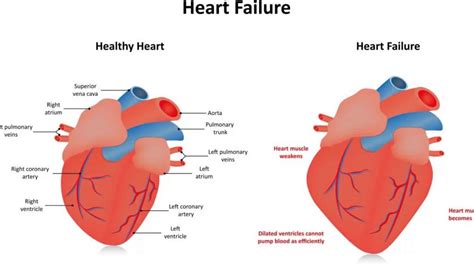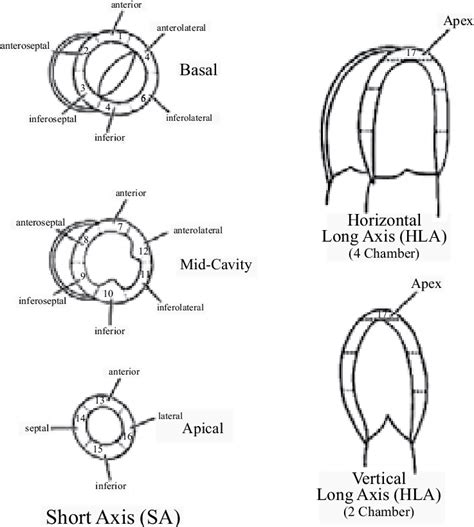what is global hypokinesia of lv Global hypokinesis of the heart is a condition characterized by the weakening . Un monument historique en Allemagne est un « témoignage culturel d'une valeur historique ou artistique » [1]. Les critères de sélection, la définition des différents .
0 · severe global lv hypokinesis
1 · severe apical wall hypokinesis
2 · left ventricle not pumping properly
3 · left side heart failure symptoms
4 · global hypokinesis treatment and medications
5 · global hypokinesis mayo clinic
6 · global hypokinesis life expectancy
7 · 20% ejection fraction survival rate
$130. Shop ALLURE HOMME SPORT Eau de Toilette Spray - 3.4 FL. OZ. and discover more Fragrances at CHANEL.com. Shop now and enjoy complimentary samples.
It's a condition that impacts about 9% of people over the age of 60, which is around 7 million Americans. In this Mayo Clinic Minute, Dr. Paul Friedman, a Mayo Clinic cardiologist, explains what the condition is and how it can be diagnosed and treated. Watch: The Mayo .Global hypokinesis is a condition wherein the heart is generally very weak all through along with mild to severe blockages of the coronary arteries. All the parts of the heart, i.e., the ventricles, walls, membranes, and arteries, etc. are . Global hypokinesis of the heart is a condition characterized by the weakening .
The prognosis of left ventricular noncompaction (LVNC) remains elusive despite its recognition as a clinical entity for >30 years. We sought to identify clinical and imaging characteristics and risk factors for mortality in .
An echocardiogram revealed moderate-to-severe global hypokinesis of the . Mild hypokinesia basically means that the muscle of your heart does not .Ejection fraction (EF) is a measurement that represents the percentage of blood the left .
Hypokinesis was classified as global when it symmetrically involved all segments or segmental if it was predominantly localized to specific segments.Regional wall motion abnormalities are defined as regional abnormalities in contractile function. Ischemic heart disease is the most common cause of wall motion abnormalities. Assessment of wall motion abnormalities is particularly .Systolic heart failure: The bottom pumping chamber of your heart called the left ventricle is too weak to pump blood out to your body. It’s also known as heart failure with reduced ejection fraction. Diastolic heart failure: The left ventricle is stiff and can’t relax appropriately, making it difficult to fill with blood. This condition is also known as heart failure with preserved . Cardiac wall motion abnormalities describe kinetic alterations in the cardiac wall motion during the cardiac cycle and have an effect on cardiac function.Cardiac wall motion abnormalities can be categorized with respect to their degree and their distribution pattern that is whether they are global or segmental and whether they can be attributed to a coronary .
An echocardiogram revealed moderate-to-severe global hypokinesis of the LV, ejection fraction (EF) estimated at 30%, a 19×7 mm thrombus in the LV apex and a mildly dilated left atrium with tissue Doppler features of diastolic dysfunction (figures 1 and 2, video 1). Acute decompensated heart failure (ADHF) responded appropriately to aggressive .
severe global lv hypokinesis

Video: La fracción de eyección del corazón. What is “ejection fraction”? Ejection fraction (EF) is a measurement, expressed as a percentage, of how much blood the left ventricle pumps out with each contraction.Global hypokinesis gives information about improper functioning of each and every part of heart i.e. all the Chambers, membranes, walls of heart, ventricles and arteries etc. Due to improper functioning there is irregularities in the tasks of heart and as a result the heart becomes weak and lose it's strength. Global hypokinesis is a different .
neighbours elly and chloe
Hypokinesis was classified as global when it symmetrically involved all segments or segmental if it was predominantly localized to specific segments. . regional WM abnormality was found to be more important than global LV systolic function for predicting adverse cardiovascular events in patients receiving thrombolytic therapy for ST-elevation . Please answer our questions about global hypokinesis. My brother is suffering from global hypokinesis for the last 1.5 years. He is undergoing treatment in India and after 12 months of bed rest and medication, his EF (ejection fraction) has increased from 12% to 49%.Previous chapters have discussed several methods for assessment of global and regional ventricular function. Assessment of regional wall motion is an integral aspect of virtually every echocardiographic examination. . Myocardial infarction may cause regional hypokinesia, akinesia or dyskinesia. The distribution of wall motion abnormalities .
Introduction: Global left ventricular (LV) hypokinesis is considered to be the cause of stroke, while the significance of segmental wall motion abnormalities is still unknown. Objectives: The aim of the study was to determine the frequency of embolic signals in the middle cerebral artery in patients with segmental LV wall hypokinesis in the course of coronary artery disease (CAD) .What is hypokinesia? It is the deterioration in the functions of the heart secondary to weakness in some parts of whole parts of the heart. What is global hypokinesis? It is a medical condition affecting one of the vital organs of the body, the heart. The condition is described as global because it affects every Left ventricular ejection fraction (LVEF) is the central measure of left ventricular systolic function. LVEF is the fraction of chamber volume ejected in systole (stroke volume) in relation to the volume of the blood in the ventricle at the end of diastole (end-diastolic volume). Stroke volume (SV) is calculated as the difference between end-diastolic volume (EDV) and .
severe apical wall hypokinesis
Background—Left ventricular (LV) global longitudinal strain (GLS) is a measure of the active shortening of the LV in the longitudinal direction, which can be assessed with speckle-tracking echocardiography. The aims of this evaluation were to validate the prognostic value of GLS as a new index of LV systolic function in a large cohort of patients with chronic . Left ventricular diastolic dysfunction (LVDD) is a condition that affects your heart’s ability to fill up with blood before sending the blood out into your circulation.
Hence, LV akinesia/hypokinesia and LVEF < 55 % were also evaluated by LRP and LRN, which showed comparable findings to PPV and NPV [22, 23]. According to the LRP results, akinesia/hypokinesia and LVEF < 55 % was 1.5 times more likely in cases with ACA than those with NCA. The LRN values suggested that normal LVF was 0.3 times more likely in . Myocardial infarction promotes transformation of both infarcted and non-infarcted regions, which leads to global LV dilation, referred to as “ventricular remodelling”. . Hypokinesis or akinesis in the mid- and apical segments (although it can affect the basal segments alone) of the LV causes “apical ballooning” with compensatory basal .
A left ventricle (LV) ejection fraction of about 50% to 70% is categorized as normal. A mildly reduced LV ejection fraction is usually between 41% and 49%. A reduced LV ejection fraction is usually 40% or less. Even if you have a normal ejection fraction, your overall heart function may not be healthy. Talk with your health care provider if you .
Left ventricular hypertrophy. Left ventricular hypertrophy is a thickening of the wall of the heart's main pumping chamber, called the left ventricle. Hypokinesia (Greek “from below” + “movement”), also referred to as bradykinesia, is a state of the body in which insufficient motor activity is observed, which leads to a limitation of the pace and range of movements.Motor activity worsens against the background of early mental and neurological disorders – Parkinson’s disease and other extrapyramidal syndromes.

Assessment of left ventricular systolic function has a central role in the evaluation of cardiac disease. Accurate assessment is essential to guide management and prognosis. Numerous echocardiographic techniques are used in the assessment, each with its own advantages and disadvantages. This review is based on a literature search of the PubMed, MEDLINE, . Transient LV systolic dysfunction in the absence of obstructive CAD can occur in patients with acute medical illness, especially those treated in intensive care units. 73–81 The transient wall motion abnormalities associated with acute medical illness can present as global LV hypokinesis, apical and/or midventricular hypokinesis, or isolated .
Patients with LV dysfunction, regardless of being in the cardiac or non-cardiac disease group, had lower VTI, indexed stroke volumes, and cardiac index than patients with normal LV function (Table 2). Regional hypokinesia, with or without low EF, was more common than global hypokinesia and was seen in 82 patients (20%) of the total population .
left ventricle not pumping properly

Echocardiography showed a left ventricular ejection fraction of 41% with global left ventricular hypokinesis. There was associated reduced right ventricular systolic function and elevated right ventricular systolic pressure (57 mm Hg) with bilateral atrial enlargement. Mild global hypokinesis, with moderate hypokinesis of the inferior and apical walls. Mildly low resting left ventricular ef of 45% post test 51%? Can mild hypokinesis of the left ventricle be a normal variant for some people? Can mild hypokinesis of the left ventricle be reversed? I began a HIIT, weight toning program along with the excellent .

Hypokinesia is the flip side of the term hyperkinesia. Hypokinesia occurs when you have too little movement, and hyperkinesia occurs when you have too many involuntary movements. Good news! Many people with a low ejection fraction (or EF) have successfully improved it.. Better heart failure management can lead to a better ejection fraction. By managing your heart failure carefully and following your treatment plan, you might have fewer symptoms and achieve a greater sense of well-being.
The entity of neurogenic stunned myocardium does appear similar to Takotsubo cardiomyopathy but shows more global hypokinesis rather than the regional wall motion abnormality of apical ballooning. Improvement in function is observed within 2 to 5 days after the neurologic event, again suggesting that stunned myocardium was a prominent feature .
What is the ejection fraction formula? The ejection fraction (EF) formula equals the amount of blood pumped out of the ventricle with each contraction (stroke volume or SV) divided by the end-diastolic volume (EDV), the total amount of blood in the ventricle.
chanel ?anta nereden al?n?r
hermes ochsenhausen
Crafted in black grained calfskin, it features a magnetic flap that conceals a zip pocket to safely store all the essentials, while the adjustable Christian Dior jacquard shoulder strap allows the bag to be worn over the shoulder or crossbody. Black grained calfskin. Embossed Dior signature on interior.
what is global hypokinesia of lv|global hypokinesis treatment and medications


























